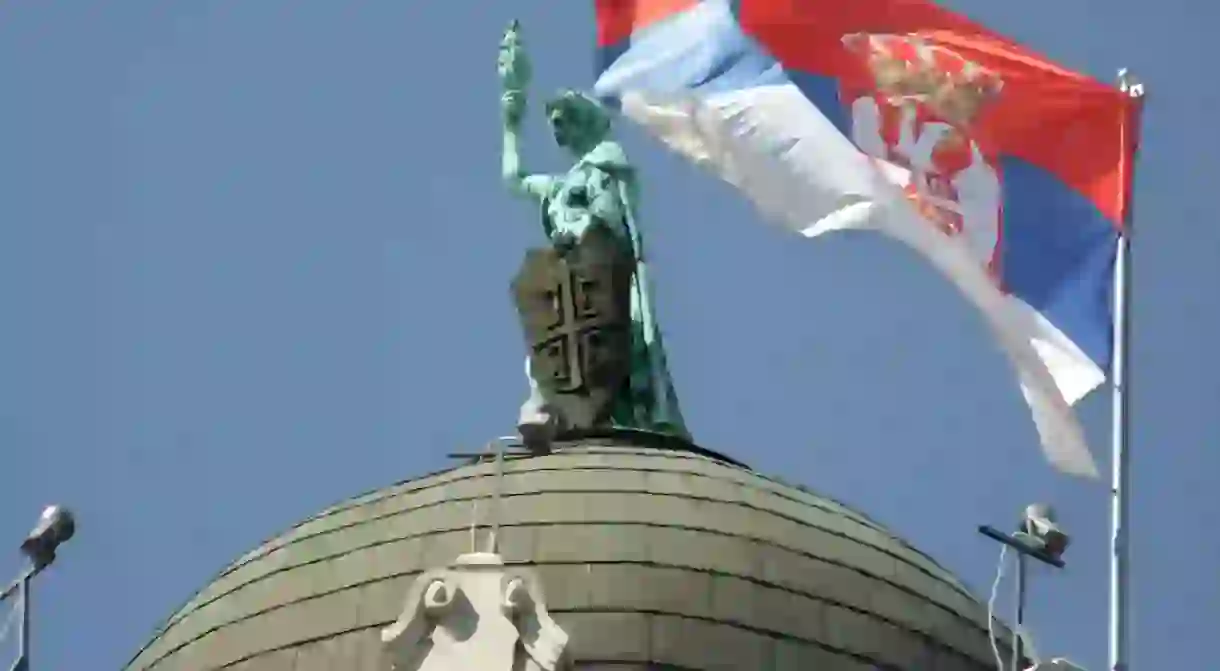An Expat's Guide To Living in Serbia

More and more expats are plunging into the weird and wonderful world of Serbia every year, and the only question mark hangs over why it has taken so long. If you’re looking to move to Belgrade and beyond, we’ve got all you need to know within the 975 words below.
Why Serbia?
Okay, so there are other question marks. Why move to Serbia in the first place? We’ve waxed lyrical in the past about the people, the nature, the nightlife, the food and the rest, but what about full-time living in Serbia? Well, you get all of the good stuff on your plate whenever you want it, an experience embellished by low living costs and a great launching pad for exploring the rest of the Balkans.

Visas and the rest
The grey area surrounding the legality of moving to Serbia is thick enough to justify using the word ‘foggy’ as a descriptor. The law is clear, but the reality is very different. For stays of up to three months, you’ll need to register with the police within 48 hours of arriving. If you’re staying in a hotel or hostel, they will do this for you. When those 90 days are up, you’ll need to scram, but little more than a quick dip into Bosnia or Croatia will be necessary.
If you’re hoping to stay for more than three months but less than a year, a temporary visa will be required. You can only do so if you have employment, education or family in the country, and your work or college will help you through the process. Most freelancers tend to take the ‘short stay and a trip to Bosnia every three months’ option. A permanent visa is only available to those who have lived in the country a long time or have been married to a Serb for three years.
Employment opportunities
In general, only two types of expats move to Serbia from an employment standpoint. On the one hand, there are those who have work lined up in the country, and are moving to the country for professional, opposed to personal reasons. The other hand is taken up by remote workers earning from outside Serbia but looking to take advantage of the benefits of living in the state.
If you think you’ll be able to rock up in Serbia and find a job easy peasy, you’re going to be in for a rude awakening. Unemployment in the country is currently around 13%, with less than 50% finding themselves in gainful employment. The average wage in Belgrade is around $230 a month, and many Serbs work two or three jobs to keep their heads above water. There simply aren’t employers waiting to hand out jobs to naive foreigners.

Which side of the river?
Most expats moving to Serbia will pitch their tents in Belgrade, and with good reason. The capital city holds a quarter of the nation’s population and is the undoubted centre of the state, offering a wide range of accommodation in a variety of neighbourhoods. Which side of the river should you move to?
Old Belgrade brings the charm, with almost all of the best sights, attractions, cafes and bars found on the southern side of the rivers. Dorćol and Vračar are the most attractive options, and for many ‘moving to Belgrade’ will mean moving to this side of town. It is easy to see why.
Don’t sleep on New Belgrade though. It might not be the prettiest, but the biggest municipality in the city is set up for those looking to truly ‘live’ in the city. Great restaurants and most of the expat employment industry make Novi Beograd an equally decent choice when it comes to setting up shop.
If you’re looking for the best of both worlds, the old and the new, the functional and the romantic, then Zemun is the answer to your quandary. The town within a town brings all of the history of Belgrade but with a residential atmosphere.

Beyond Belgrade
Living and working in Belgrade isn’t easy, but things get much harder outside of the capital. Living in Novi Sad, Niš, Kragujevac and the rest is a way to dig deep into the heart of this alluring nation, but it also requires a lot of work. Freelance work is almost the only option, and extra effort will be needed when it comes to language.

Getting to grips with the language
With that in mind, it is definitely a good idea to get acquainted with the Serbian language before making the move. English can be found fairly frequently across Belgrade, but this isn’t the case further afield. Why should it be? It really does pay to pick up a little bit of basic Serbian if you’re hoping to get the most out of the country.
There are plenty of options for Serbian lessons in Belgrade, be they private or public. Teaching the language is a useful form of secondary income for many, so be sure to check social media groups for someone to help you explore the magnificent srpski jezik.
And best of luck!
There are plenty of hurdles that one must jump in order to move to Serbia, but the struggles are most definitely worth it. One of the most vibrant cultures on the planet awaits, not to mention an inspiring populace and some of the best food on the continent. Serbia doesn’t make things easy for you, but that makes it all the more rewarding for those who make the jump.














